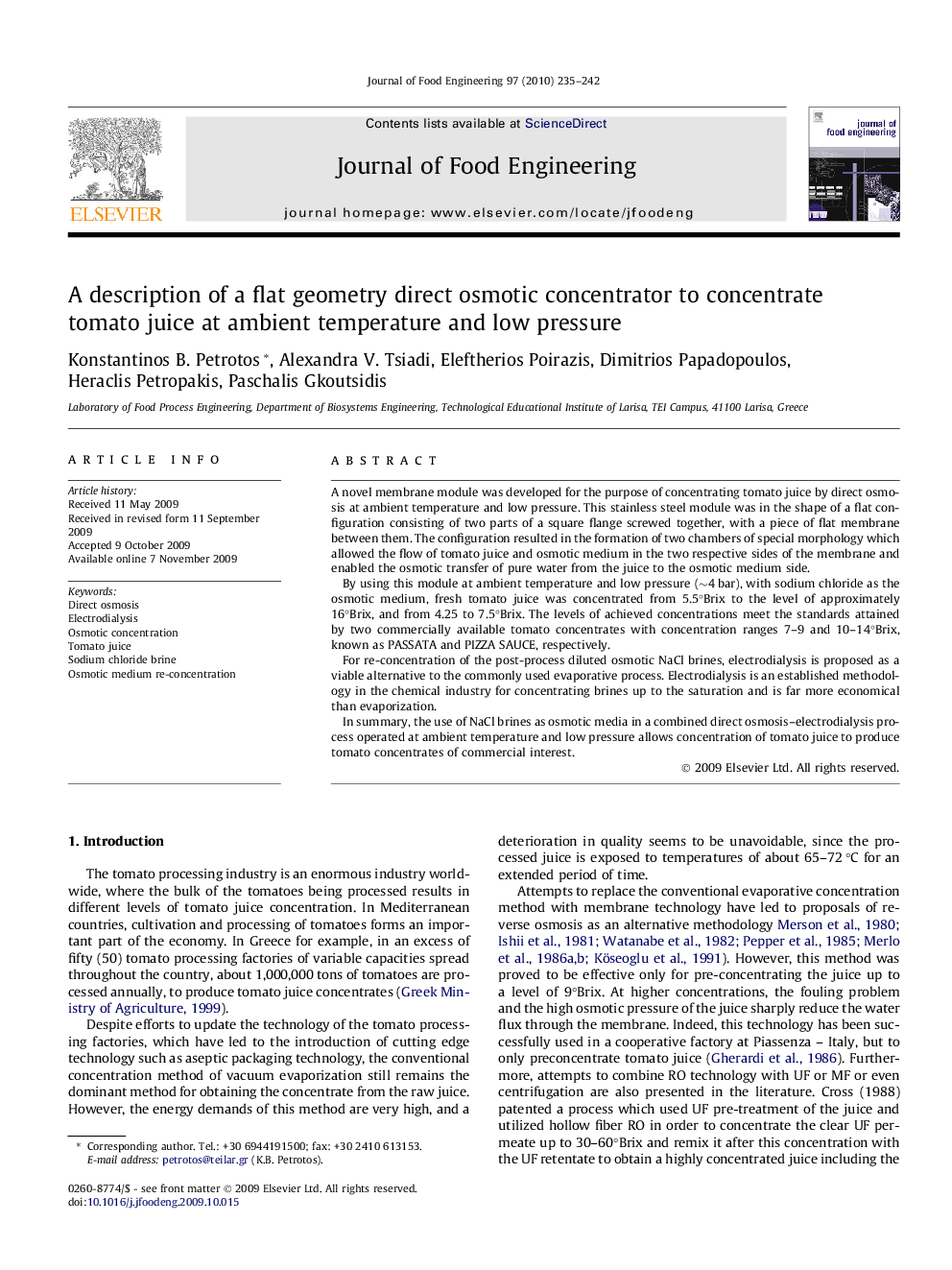| Article ID | Journal | Published Year | Pages | File Type |
|---|---|---|---|---|
| 224157 | Journal of Food Engineering | 2010 | 8 Pages |
A novel membrane module was developed for the purpose of concentrating tomato juice by direct osmosis at ambient temperature and low pressure. This stainless steel module was in the shape of a flat configuration consisting of two parts of a square flange screwed together, with a piece of flat membrane between them. The configuration resulted in the formation of two chambers of special morphology which allowed the flow of tomato juice and osmotic medium in the two respective sides of the membrane and enabled the osmotic transfer of pure water from the juice to the osmotic medium side.By using this module at ambient temperature and low pressure (∼4 bar), with sodium chloride as the osmotic medium, fresh tomato juice was concentrated from 5.5°Brix to the level of approximately 16°Brix, and from 4.25 to 7.5°Brix. The levels of achieved concentrations meet the standards attained by two commercially available tomato concentrates with concentration ranges 7–9 and 10–14°Brix, known as PASSATA and PIZZA SAUCE, respectively.For re-concentration of the post-process diluted osmotic NaCl brines, electrodialysis is proposed as a viable alternative to the commonly used evaporative process. Electrodialysis is an established methodology in the chemical industry for concentrating brines up to the saturation and is far more economical than evaporization.In summary, the use of NaCl brines as osmotic media in a combined direct osmosis–electrodialysis process operated at ambient temperature and low pressure allows concentration of tomato juice to produce tomato concentrates of commercial interest.
